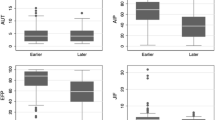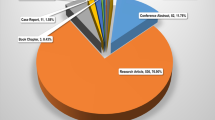Abstract
To find out whether replication of methods section in biosciences papers is a kind of plagiarism, the authors firstly surveyed the behavior of authors when writing the methods section in their published papers. Then the descriptions of one well-established method in randomly selected papers published in eight top journals were analyzed using CrossCheck to identify the extent of duplication. Finally, suggestions on preparing the methods sections were given. The survey results show that an author may employ different approaches to writing the methods section within a paper, repeating published methods is more often than give citation only or rewrite complete using one’s own words. Authors are more likely to repeat the description of a method than simply to provide a citation. From the samples of the eight leading journals, plagiarize is very rare in such journals; Learning from Science, attachment may be a considerable choice for papers with common methods.


Similar content being viewed by others
References
Burnette, W. N. (1981). “Western blotting”: Electrophoretic transfer of proteins from sodium dodecyl sulfate-polyacrylamide gels to unmodified nitrocellulose and radiographic detection with antibody and radioiodinated protein A. Analytical Biochemistry, 112, 195–203.
Committee on Publication Ethics (COPE). (2012). http://www.publicationethics.org. Accessed Sept 2012.
Council of Science Editors (CSE). (2012). CSE’s White Paper on promoting integrity in scientific journal publications. 3.0 Identification of research misconduct and guidelines for action. http://www.councilscienceeditors.org/i4a/pages/index.cfm?pageid=3643#313. Accessed Sept 2012.
Jia, X. Y., & Zhang, Y. H. (2013). Problem of duplication in the methods section in bioscience papers: Part 2. China Publishing Journal, 309, 5–6 (in Chinese).
Kallet, R. H. (2004). How to write the methods section of a research paper? Respirat Care, 49, 1229–1232.
Meddings, K. (2011). CrossCheck Plagiarism Screening: What’s the Magic Number? http://www.ismte.org/File/Aug11CrossCheck.pdf. Accessed 3 June 2012.
Miller, N. R. (2011). Checking for plagiarism, duplicate publication, and text recycling. Lancet, 377, 1403.
Ramos, M. A., Melo, J. G., & Albuquerque, U. P. (2012). Citation behavior in popular scientific papers: What is behind obscure citations? The case of ethnobotany. Scientometrics, 92, 711–719.
Roig, M. (2009). Plagiarism: Consider the context. Science, 325, 813–814.
Roig, M. (2012). Teach scientist to pharaphrase. Nature, 481, 23.
Tan, X. F., & Zhang, Y. H. (2013). Problem of duplication in the method section in bioscience papers: Part 1. China Publishing Journal, 309, 3–4 (in Chinese).
Wager, E. (2012). How should editors respond to plagiarism? COPE discussion paper. http://publicationethics.org/files/COPE_plagiarism_discussion_%20doc_26%20Apr%2011.pdf. Accessed Aug 2012.
Wager, E., Fiack, S., Graf, C., Robinson, A., & Rowlands, I. (2009). Science journal editors’ views on publication ethics: results of an international survey. Journal of Medical Ethics, 35, 348.
Zhang, Y. H. (2010a). Chinese journal finds 31 % of submissions plagiarized. Nature, 467, 153.
Zhang, Y. H. (2010b). CrossCheck: an effective tool for detecting plagiarism. Learned Publishing, 23, 9–14.
Zhang, Y. H. (2010c). International, not ‘campus’, please. Nature, 467, 789.
Zhang, Y. H., & Jia, X. Y. (2012). A survey on the use of CrossCheck for detecting plagiarism in journal articles. Learned Publishin, 25(4), 292–307.
Zhang, Y. H., Jia, X. Y., Lin, H. F., & Tan, X. F. (2013). Be careful! Avoiding duplication: a case study. Journal of Zhejiang University-Science B, 14(4), 355–358.
Acknowledgments
The authors sincerely not only acknowledge the substantial help and advice provided by Sally Morris at all stages in the preparation of this paper, but also would like to express heartfelt thanks to all respondents in the survey. This work is part of a research study commissioned by the Committee on Publication Ethics (COPE) with the aim of developing evidence-based guidance for journal editors on how to deal with different kinds of plagiarism detected through the use of CrossCheck (http://publicationethics.org/resources/research).
Conflict of interest
None.
Author information
Authors and Affiliations
Corresponding author
Rights and permissions
About this article
Cite this article
Jia, X., Tan, X. & Zhang, Y. Replication of the methods section in biosciences papers: is it plagiarism?. Scientometrics 98, 337–345 (2014). https://doi.org/10.1007/s11192-013-1033-5
Received:
Published:
Issue Date:
DOI: https://doi.org/10.1007/s11192-013-1033-5




